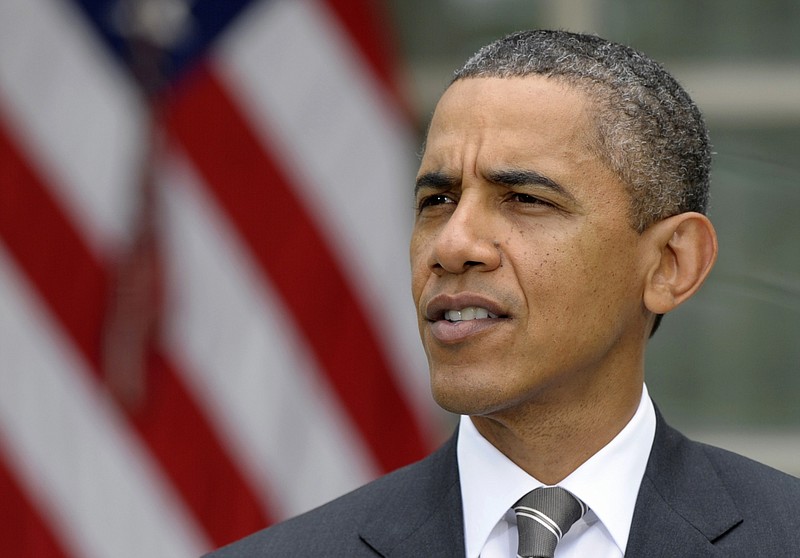The Great Recession ended five months after President Barack Obama took office, but many Americans still have experienced little or no recovery.
Here's why:
The policies employed by Obama and his administration, according to a new report by the Heartland Institute, have produced the worst recovery from a recession since the Great Depression. And now he'd like Hillary Clinton to follow him in office to continue those same policies.
It's the classic definition of insanity often attributed to Albert Einstein - to keep doing the same things over and over again and expect different results.
Middle-class and poor Americans, especially, have felt the lack of a recovery.
Real median household income fell 8 percent during Obama's first term. Compare that to the second term of President George W. Bush, which included 13 months of the recession, when real median household income rose 1.7 percent. Even today, according to the Census Bureau, annual household income is $1,300 below what it was when Obama took office.
Meanwhile, 6 million more Americans are in poverty than when the president was inaugurated. And the poverty rate, at 14.8 percent earlier this year, was still higher than it was when the War on Poverty was launched in 1966.
The reason, according to the study authored by Heartland Institute senior fellow Peter Ferrara, is Obama's Keynesian economic policies, which hold that increased government spending, deficits, higher debt and an easy monetary policy during recessions lead to restored growth.
Keynesian policies, used during the Great Depression and recessions from the 1930s through the 1970s, were attempted for so long, according to the study, because they were perfect for elected officials.
"The only reason Keynesian economics has survived in Western thinking," Ferrara wrote, "is not because it works, or even that it makes any sense, but because it justifies what many politicians already want to do: spend with reckless abandon, run deficits so they don't have to pay for that spending explicitly with higher taxes today, and run up the national debt, which will be someone else's problem later."
That's a pretty cynical way to run a government, but it fits for Obama and Clinton, whose plan is nothing like that of her husband, Bill, who as president cooperated with a Republican Congress in the late 1990s for balanced budgets and strong economic growth.
In the previous 11 recessions after the Great Depression, the economy recovered all the jobs it lost in an average of 27 months after the recession began. In the current recovery, it took 76 months - more than six years.
In the recession following the money-tightening policies of Ronald Reagan in the early 1980s - breaking out of the Keynesian cycle - all the job losses came back in 35 months, and in 76 months 12.8 million more jobs had been created. At that point in the Obama administration, the country had a net increase of zero jobs.
By early 2016, 98 months after the Great Recession started, the economic recovery under Obama had created 9.4 million jobs. During the same point under Reagan, 21.5 million jobs had been created with a smaller population, economy and labor force, making the growth all the more impressive.
Pundits who then make the argument that Reagan's supply-side economy produced high federal budget deficits and, thus, prove actual Keynesian behavior have no leg to stand on. Reagan's deficits were negligible compared to Obama's, and the economy growth during his tenure was significantly more robust than that under Obama.
The two presidents also stand apart on government spending, income tax rates, corporate tax rates and regulation. Where Reagan reduced government spending as his first act in office, cut income tax rates for everyone and pursued a policy of deregulation, Obama has raised tax rates on capital gains and dividends, pursued income tax rate hikes on employers, savers, investors, successful small businesses and top professionals, and pursued a policy of overregulation.
To hear the president speak, his specific policies have been taken to lift the likes of blacks, Hispanics, women and young people. But under him those are the groups who have suffered the worst. Blacks have been plagued with double-digit inflation during almost his entire presidency, Hispanic levels have been nearly as bad, women have seen steeper declines in take-home pay than men, and black and Hispanic teen unemployment as of September 2015 was 31.5 percent and 18.6 percent, respectively.
To put Obama's policies into perspective, had the economic recovery under his watch been the average of what it was during all post-World War II recoveries, the U.S. gross national product would be $2 trillion higher, the average U.S. household would have $17,000 more and the country would have 6 million more jobs.
As evidenced by the above paragraph, how one governs means a lot. Hillary Clinton means to govern nearly in lockstep with current policies. Can this once economically booming nation afford to have four more years of stagnation?
